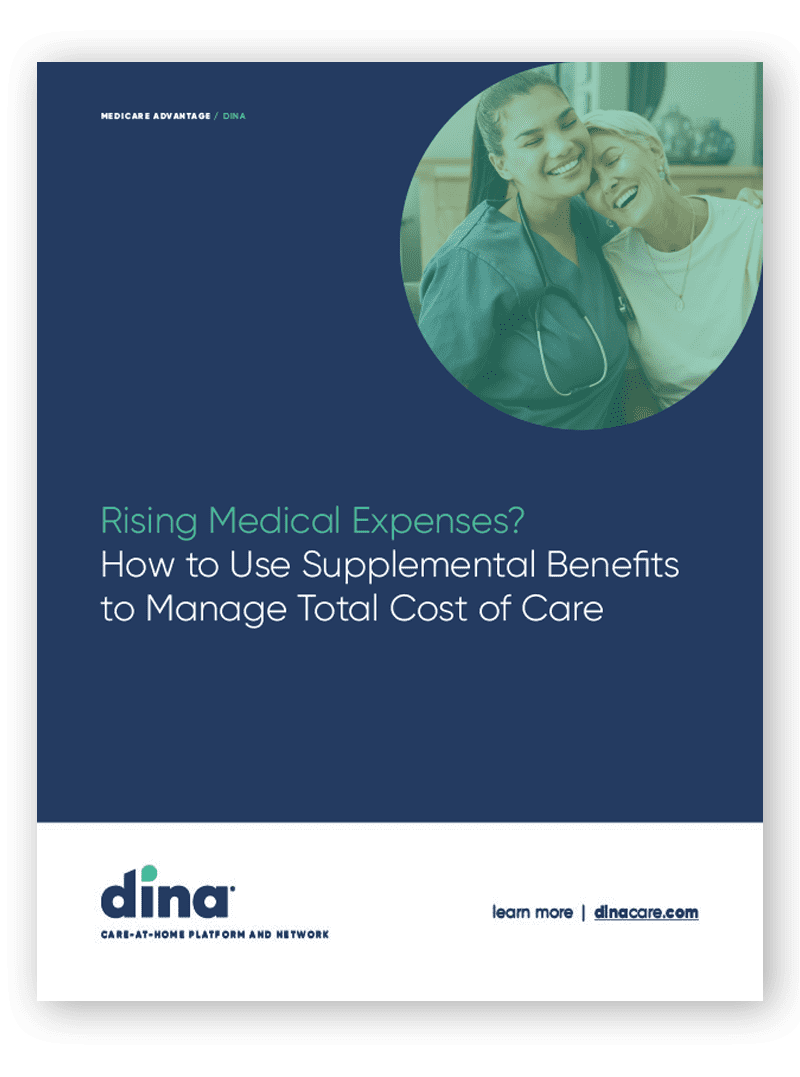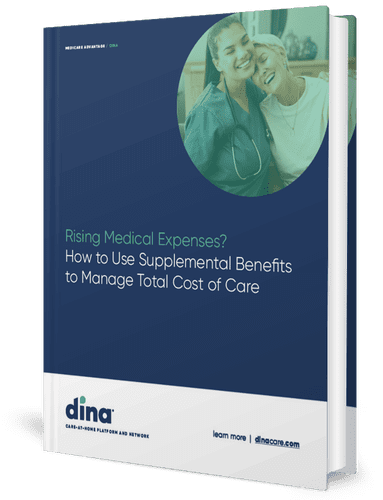
In-home services have been shown to address social determinants of health and health equity. But finding capacity and arranging services for members remains a problem.
“It is always difficult to find the right provider at the right time to meet the specific needs of members,” said Travis Woyner, senior vice president of strategy at Dina. “Those challenges increase as members expect more in-home services from personal care, to home health, to hospice and palliative, and the expanding non-medical pool of benefits. In all of these services, staffing shortages persist, and rule changes like the Medicaid Access Rule and CMS’s continued push towards streamlined access to care and benefits in Medicare Advantage add another layer of complexity.”
As health plans adjust to a difficult landscape, Woyner answers questions about improving efficiency, reviewing network adequacy, and managing out-of-network expenses.
How are health plans trying to resolve capacity issues?
On the Medicare Advantage side, some health plans are pulling back on benefits for in-home services, and this has not been well-received by members. In-home and personal care services are ranked as some of the most beneficial–and most desirable– benefits. So when you take something like that away, members are going to find the plans that have figured out how to deliver and arrange these services.
On the Medicaid side of the house, we’re seeing more plans review their care-at-home networks and think critically about how to engage providers, particularly in markets with state-certified lists of care-at-home (e.g. LTSS or personal care) providers. Medicaid plans are beginning to get scientific in how they measure coordination performance around access – tracking SLAs for fill rates and start of service timeframes. They’re asking: can we get our members the services they need and do we have the right depth of network to do that?
What happens when plans struggle to deliver services?
The issue is that people need care-at-home services, are increasingly expecting more services delivered on their terms, and the plan is on the hook to deliver them. Plans don’t always have enough providers in their network or their members may receive a start of service date weeks or months in the future. This opens the door to negative outcomes, poor satisfaction, and access impacts to STAR ratings.
When access challenges arise and availability proves scarce, many health plans go to Google and start calling and trying to find somebody that can fulfill the service. It becomes an operationally inefficient process. It’s a waiting game for members, and an expensive proposition for health plans because they may need to pay out-of-network or non-standard rates to get that service rendered.
 How does Dina support capacity challenges?
How does Dina support capacity challenges?
If a plan needs to go out-of-network to arrange services, most lack visibility into provider options, capabilities, and cost of services. There’s no transparency. When we work with health plans, we onboard all of the marketable providers in their geographies. We start with contracted providers and then extend that to out-of-network and non-contracted providers where capacity challenges arise. Onboarding includes the capture of provider details like services offered, specialties, languages spoken, and rates for services. We have systems in place to make sure the information is accurate and remains up-to-date. It saves a ton of time for customers when they need to evaluate their out-of-network options or bolster their network in moments of need.
Depending on the service, we are able to provide a pre-contracted network of agencies and individuals that will guarantee a set rate. This eliminates the unpredictable price variability and the unexpected premium added to out-of-network rates. It’s an exciting option that will provide a pool of people who are ready to go when those gaps are present, and bring down the cost of those one-off or limited use cases.
What’s a good first step to understand the issues?
I would say go talk to your coordination staff and your care managers to understand how long members are waiting to get access to critical services, and how often they struggle to find coverage, or need to go out-of-network to deliver services. And I would guess that number is increasing. This may be showing up in appeals and grievances which is a critical indicator that something needs to be done before suffering from a STARs hit.
The capacity challenges are real. We make it easier to establish, maintain, and engage your network. And if you do have to go out-of-network, we can help you do that as well in a more efficient and cost-effective way.

Rising Medical Expenses?
Don't Cut Benefits!
Instead, see how to drive smart utilization of non-medical benefits to meet your value-based objectives. Download the report "Rising Medical Expenses? How to Use Supplemental Benefits to Manage Total Cost of Care" to learn more.


 How does Dina support capacity challenges?
How does Dina support capacity challenges?


